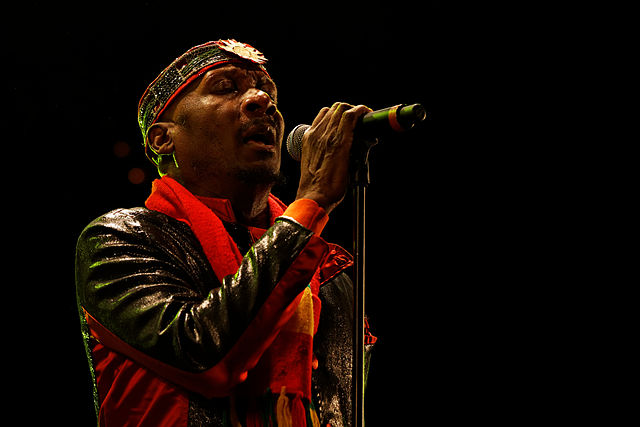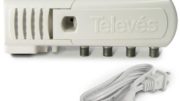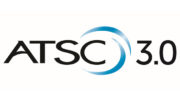A while back I was talking to our Signal Pro Rob Young about the way that digital broadcasting works. Rob’s a smart guy and I’ve learned a lot from him. We were talking about some of the common terms that people use to describe the way that this kind of signal drops off at a certain point. I even wrote an article about this, and I called it “the shelf effect.” But Rob calls it “the cliff effect,” and so does Wikipedia. So it’s time to revisit that whole idea, talk some more about it, and you can call it whatever makes the most sense to you.
Before I start…
I guarantee there is some retired engineer out there who will point out that there is no such thing as “digital broadcasting” or a “digital signal.” I will say to a degree that is true, and to a degree it is not. Television today consists of information encoded digitally, as a bit stream, and carried over an analog carrier. Why? Because that hypothetical engineer is right. In the real world, technically nothing is digital. Nothing is monolithically “one” or “zero.” That’s only possible in the world of imagination. But I think that we all agree that when you’re talking about the characteristics of something that is read and understood as a stream of ones and zeroes, it’s digital. You can argue all day about how it’s not “truly” digital but at some point it’s interpreted as a one or a zero, even if it’s really .83 or .33. So I’m going to use the term “digital broadcasting” from now on, with the full understanding that it’s not any more accurate than saying “wind down the windows” or “it’s fixing to rain.” Neither of those are technically accurate either. But you know what I’m trying to say.
Now back to the story.
The shelf effect, or the cliff effect, whatever you call it, happens when a digital broadcast reaches a certain threshhold. Unlike traditional broadcasts which gets weaker and weaker, there’s a point where, a signal that is of a certain strength can be decoded and a weaker signal can’t. Period. If you’re 55 miles from the broadcast towers, you may get great signal. A tenth of a mile down the road, you might get nothing. That’s how digital broadcasting works.
This is generally attributable to the signal going below the point where it becomes possible to tell a 1 from a 0 in the bit stream. I’ve talked before about how signal-to-noise ratio is the most important measurement of digital signals. There’s noise everywhere, it’s just part of the universe. When a digital TV signal approaches the point where it’s so weak that it’s indistinguishable from the noise around it, it degrades very rapidly. At that point the signal stops being usable and you get nothing on your TV.
A bit about error correction, which is another big part of this
One of the reasons that this seems to happen so abruptly is the concept of error correction. This is another subject I’ve covered in a blog article so I’ll only touch on it here. When a signal is transmitted, you’re not just getting the raw data. Built into it are a bunch of ways for the receiving device (your TV in this case) to make up for missing information or flaws in the broadcast. There are, in fact, several layers of error correction built in. So, a TV’s tuner can make up for a less-than-perfect bit stream… up to a point. When there’s not even enough signal to be able to correct for errors, you lose the picture on the screen. Again this appears to happen pretty fast because the error correction is pretty good. A lot of a signal can be missing and you can still get a great picture. That’s all due to error correction.
Error correction is also used in cell phones to send you the right data. Imagine if your phone stopped working every time it missed a 1 or a 0 as you were browsing at a rate of 100,000,000 1s and 0s per second. That would be… no fun.
What can help the shelf effect (or cliff effect, call it what you will)?
The very idea of a shelf/cliff effect is baked into digital bit streams. It’s as natural as the way that analog signals just get snowier and snowier. That doesn’t mean you’re doomed to lose signal forever. There are a few things that you can do.
An amplifier might help.
I’ve written an awful lot to try to help people understand the concept of amplification of digital signals. If you don’t feel like reading about 12,000 words on the subject, I’ll break it down. A quality amplifier will help compensate for losses from transmission. That means that a signal that is so weak that it would have been lost as it traveled down a cable will benefit from an amplifier. But if that signal is weak enough that the shelf/cliff effect is already happening, no amplifier will help.
A more sensitive antenna, or the right antenna, will help
The best way to get more signal is with the right antenna. the perfect antenna is the exact same size as the radio wave it’s intended to receive. That means if you’re trying to get VHF channels, you could be looking at an 18 foot wide antenna. Luckily, an antenna half as big will work almost as well. An antenna that’s a quarter as big will work almost as well as one half as big, and so on. So you can still get something even with a small antenna.
But, if you really want to get the most signal, you want an antenna that’s precisely sized for the waves you want to receive, and as big as possible. That’s the idea of a log-periodic (or LPDA) antenna. Using one of those big old-school antennas really is going to give you better results in fringe areas. It’s as simple as that. A hybrid yagi/log-periodic antenna like our HD8200XL has all sorts of features to focus as much signal as possible on the absolute right size antenna elements.
Antenna height is also a great way to help
Putting the antenna up high is a no-brainer. Antenna signals lose strength as they pass through buildings and trees. The higher up your antenna is, the more likely it is that it’s getting an uninterrupted view of the towers.
Want better reception? Let us help.
As you can see, there’s a lot to TV antennas besides just putting one on a pole and hoping for the best. If you want help choosing the right over-the-air antenna, call the experts at Solid Signal. We can help you find what you need, from the antenna itself to the accessories you need. Call us at 888-233-7563 during East Coast business hours for a free evaluation. If it’s after business hours, fill out the form below and we’ll get back to you.





